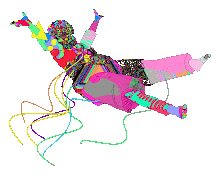 A Chinese taikonaut (Chinese astronaut) today became the first taikonaut to walk in space when he left his space craft for a total of fifteen minutes. The entire event, which marks a new stage in China's space program, was broadcast live on national TV.
A Chinese taikonaut (Chinese astronaut) today became the first taikonaut to walk in space when he left his space craft for a total of fifteen minutes. The entire event, which marks a new stage in China's space program, was broadcast live on national TV.
The walk started at 1630 local time (0830 UTC) today when he exited the spacecraft, while attached to an umbilical cable. Zhai Zhigang, who has also worked as a fighter pilot, carried out the space walk. "I'm feeling quite well. I greet the Chinese people and the people of the world," he said as he walked out of his spacecraft to start the walk.







